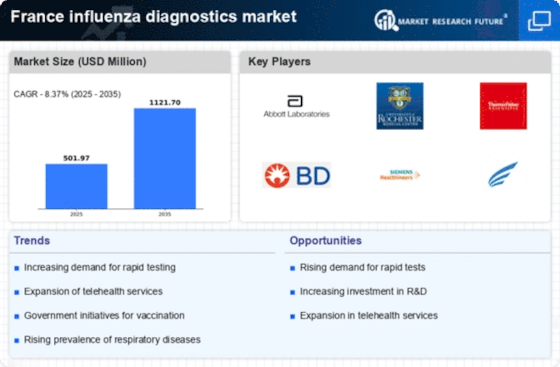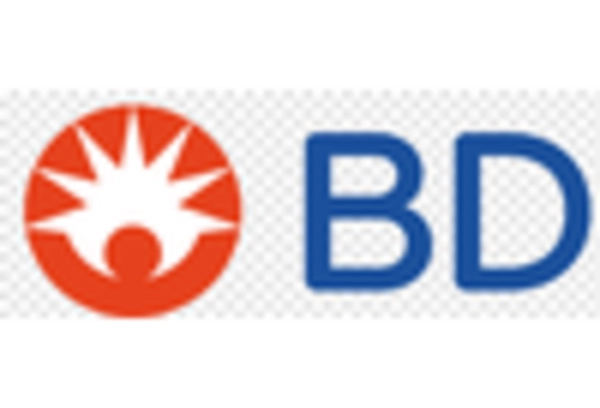Government Initiatives and Funding
Government initiatives aimed at improving public health infrastructure in France are likely to bolster the influenza diagnostics market. Increased funding for healthcare programs, particularly those focused on infectious diseases, has been observed. For instance, the French government has allocated substantial resources to enhance laboratory capabilities and expand access to diagnostic testing. This financial support is crucial for the development and distribution of advanced diagnostic tools. The influenza diagnostics market stands to gain from these initiatives, as they facilitate the adoption of new technologies and improve overall testing efficiency. Furthermore, public health campaigns promoting vaccination and early diagnosis are expected to drive demand for diagnostic services, thereby contributing to market growth.
Rising Incidence of Influenza Cases
The increasing incidence of influenza cases in France appears to be a primary driver for the influenza diagnostics market. Seasonal outbreaks, particularly during the winter months, lead to heightened demand for diagnostic testing. According to health authorities, influenza affects millions annually, with hospitalization rates reaching approximately 10,000 cases during peak seasons. This surge in cases necessitates rapid and accurate diagnostic tools, thereby propelling market growth. The influenza diagnostics market is likely to benefit from the need for timely identification of the virus, which can significantly reduce transmission rates and improve patient outcomes. As healthcare providers seek to enhance their diagnostic capabilities, investments in innovative testing solutions are expected to rise, further stimulating market expansion.
Growing Demand for Home Testing Kits
The trend towards home testing kits for influenza is emerging as a notable driver in the influenza diagnostics market. With an increasing number of consumers seeking convenience and immediate results, home testing solutions are gaining traction in France. These kits allow individuals to conduct tests in the comfort of their homes, thereby reducing the burden on healthcare facilities. The influenza diagnostics market is likely to see a rise in the development and distribution of these kits, as they cater to the growing consumer preference for self-testing. Additionally, the COVID-19 pandemic has heightened awareness regarding the importance of early diagnosis, which may further accelerate the adoption of home testing solutions for influenza.
Advancements in Diagnostic Technologies
Technological advancements in diagnostic methods are transforming the influenza diagnostics market. Innovations such as rapid molecular testing and point-of-care diagnostics are becoming increasingly prevalent in France. These technologies offer faster results, often within hours, which is critical for effective patient management. The influenza diagnostics market is witnessing a shift towards more sophisticated testing methods that enhance accuracy and reduce the time to diagnosis. As healthcare providers adopt these advanced technologies, the market is likely to experience significant growth. Moreover, the integration of digital health solutions, such as telemedicine and mobile health applications, may further streamline the diagnostic process, making it more accessible to patients across various demographics.
Increased Collaboration Between Public and Private Sectors
The collaboration between public health organizations and private sector companies is becoming increasingly vital for the influenza diagnostics market. Partnerships aimed at research and development of new diagnostic tools are on the rise in France. These collaborations often lead to the sharing of resources, expertise, and technology, which can enhance the overall effectiveness of diagnostic solutions. The influenza diagnostics market is likely to benefit from such synergies, as they can accelerate the introduction of innovative products to the market. Furthermore, joint initiatives focused on improving diagnostic accuracy and accessibility may contribute to better public health outcomes, thereby driving demand for diagnostic services.

















Leave a Comment